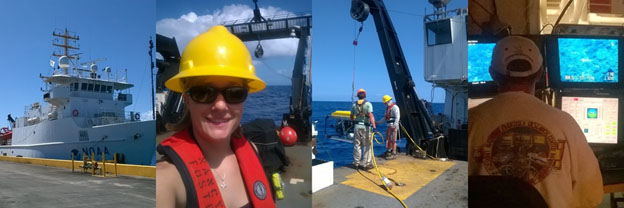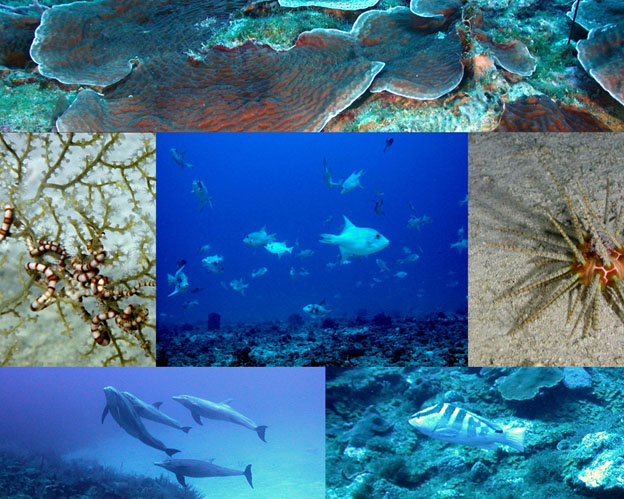Notes from the scientific expedition team currently aboard the NOAA ShipNancy Foster (March 15 -April 3):
ROVing the Depths of the Caribbean Sea
by Leslie Marie Henderson, Guest Blogger from the University of the Virgin Islands
When I say, “I am a scientist,’ what do you imagine? A nerd with safety goggles wearing a white lab coat? That I’m surrounded by flashing computer screens and bubbling glass jars? Perhaps you see me injecting lab rats while cackling madly about taking over the world. Well, I am a marine scientist, and while I do think the white lab coat is quite fetching, I don’t usually get a chance to wear it. I work for the University of the Virgin Islands (UVI) on the beautiful island of St. Thomas in the Caribbean Sea. We work on many different projects on multiple aspects of coral reef ecology all around the U.S. Virgin Islands. For more information about our research, you can check out our website at http://www.uvi.edu/research/center-for-marine-environmental-studies/research/research-projects.aspx.
Thankfully, we at UVI aren’t the only ones with an interest in our reefs. Multiple organizations, both local and national, have invested in research and protection of coral reefs and supporting marine habitats of the U.S. Virgin Islands. NOAA is one of the major contributors and we have often worked closely together to help answer some of the fundamental questions about our marine resources.

The recent mission in March/April 2014 is an excellent example! The NOAA research vessel Nancy Foster has been tirelessly navigating the waters around St. Croix, mapping the sea floor, scanning for fish aggregations, collecting oceanographic data and sending a Remotely Operated Vehicle (ROV) down to look for fish and interesting seafloor communities. I was part of the ROV team for the second half of the cruise. The main ROV operators, Lance Horn and Jason White, hail from my alma mater, the University of North Carolina, Wilmington. They are dedicated experts and are incredibly fun to work with. Each day they are up at the crack of dawn (or before) prepping the ROV and making sure everything is ready to go. Meanwhile, our NOAA team of employees and volunteers, led by Bryan Costa during my week, diligently mapped the seafloor and picked out interesting sites for us to go explore. We lower the ROV and the dive begins! The next hour or two is spent watching the live video, looking to identify fish and find interesting features, such as areas with high coral cover.

Some highlights from the dives I participated in were: a spawning aggregation of ocean triggerfish, bottlenose dolphins playing with a hawksbill sea turtle, crazy shelf edge invertebrates, a barrel sponge spawning like an underwater volcano, one big hammerhead shark, and some beautiful deep Agaricid (lettuce coral) colonies on the shelf edge.
As the mission comes to an end, I find myself looking back on the past week with fondness. We have gotten some fantastic data that will help when making local management decisions, such as highlighting potential study sites, or considering which areas might benefit the most from protection. I have met some great people, seen some interesting things, and am grateful to have had the opportunity to participate. I am confident that the relationship between NOAA and UVI will continue as we both work toward the mutual goal of understanding and, ultimately, effectively managing our essential and beautiful marine resources.
